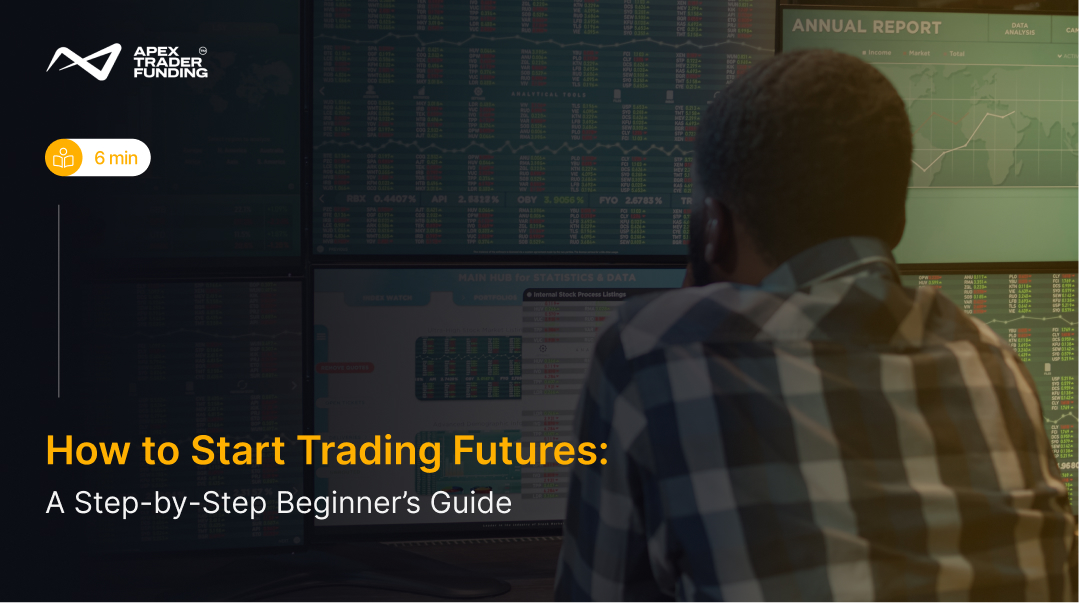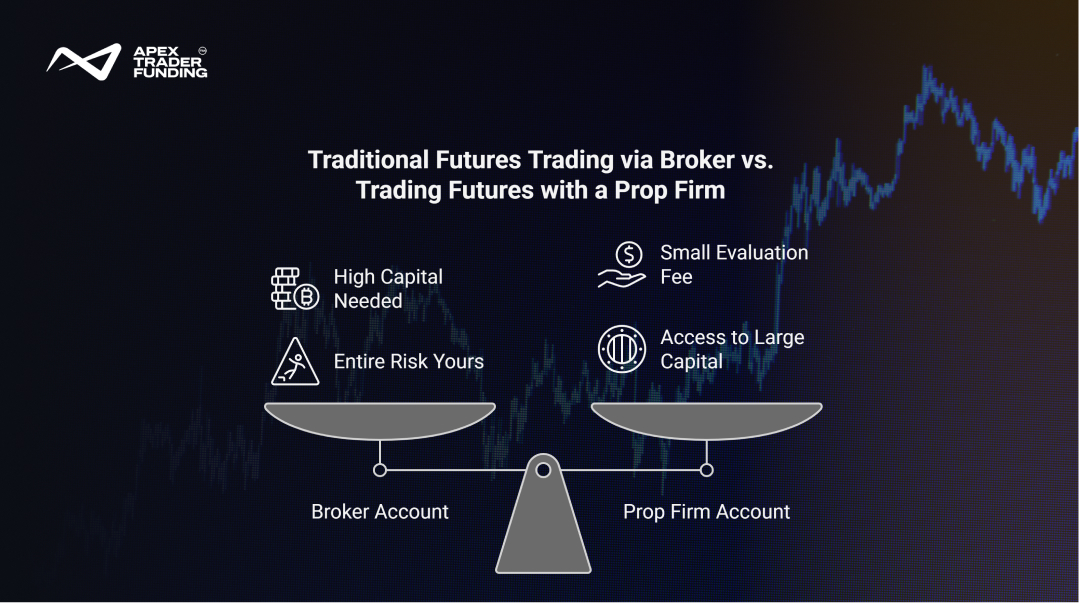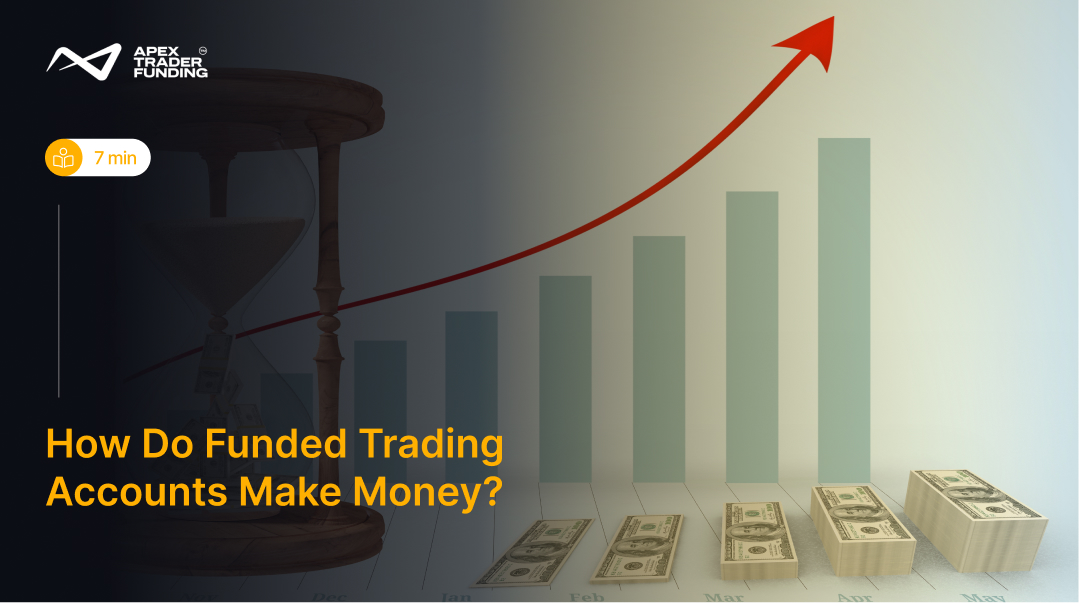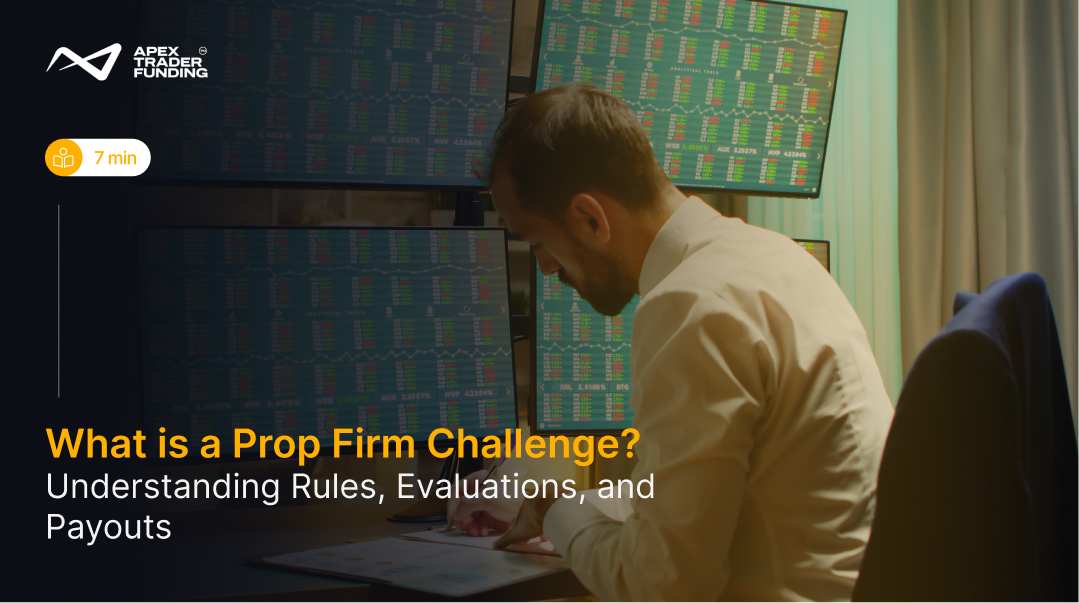
trading-strategies | 08-10-25
Futures trading is one of the most structured and disciplined ways to participate in financial markets. At first glance, it can seem technical — with concepts like contracts, margins, and leverage creating a steep learning curve. But at its core, learning how to trade futures is about developing structure, managing risk, and building consistency over time. With the right tools, mindset, and education, anyone can start trading futures with confidence and clarity.
How to Start Trading Futures?
Learning to trade futures begins with understanding both its potential and its demands. Futures offer leverage, flexibility, and global access — but they also require structure and discipline. Success starts with mastering the basics before risking real capital.
Begin by learning how contracts, margins, and leverage work. Focus on one liquid market, such as micro indices, and develop a simple strategy you can test and refine. Use stop-losses, set daily limits, and practice in a demo account to build consistency.
Mastering these basics lays the groundwork for steady progress — the next sections show how to turn that foundation into a structured trading journey.
Step 1: Define Your Goals
Every trader begins with a reason. Are you trading to generate additional income, to build long-term skills, or to eventually scale into a professional pathway like joining a prop firm? Defining your goals helps guide all other decisions — from what contract to start with to how much capital you’ll need.
Think of this as setting the framework for your journey. A trader with only a few hours per week will approach futures differently from someone treating it as a full-time career. Goals give direction and keep your expectations realistic.
Key decisions at this stage usually include:
- How much time you can dedicate to trading.
- The amount of capital you’re willing to commit at the start.
- Your tolerance for risk and drawdowns.
Step 2: Learn the Contracts
Unlike stocks, futures contracts represent an agreement to buy or sell an asset at a later date. Each contract has a size, tick value, and margin requirement. For beginners, it’s essential to understand how these work.
For example, a micro E-mini S&P 500 contract is worth one-tenth the size of a standard E-mini, making it far more accessible. Learning these basics keeps you from being surprised by how much each price movement can affect your account.
Step 3: Choose a Market
Beginners are often tempted to try multiple markets at once, from crude oil to indices to agricultural commodities. But focus is key. Select one market and get to know its rhythm. The micro index contracts are popular for new traders because of their liquidity and smaller capital requirements.
By sticking to one market, you’ll start to recognize patterns, volatility ranges, and times of day that offer the best opportunities.
In futures trading, the fastest way to lose money is to start before you’re ready. Preparation is not optional—it’s survival.
Step 4: Pick a Strategy
A strategy is simply a repeatable method of finding trades. New traders should avoid “chasing” prices and instead learn a structured approach. Here’s a quick comparison of common beginner-friendly strategies:
Your first step is not to master every strategy but to test one, journal results, and refine as you go.
Step 5: Apply Risk Rules
No matter how good the strategy, trading without risk controls is a quick path to losses. Futures contracts are leveraged, meaning small moves create big impacts. Risk rules protect you from turning one mistake into account-ending damage.
Basic guidelines to follow:
- Risk no more than 1–2% of your account on a single trade.
- Set a daily loss limit — stop trading if it’s hit.
- Always place a stop-loss order before entering a trade.
These aren’t suggestions; they are survival rules.

Step 6: Practice in Simulation
Before committing real money, use a demo or simulated account. This is where you learn execution, track mistakes, and refine your chosen strategy. Many funded account providers require traders to prove themselves in simulated environments first.
A trading journal is essential at this stage. Track not just profits and losses but also why you entered, how you felt, and whether you followed your plan. Over time, these notes will reveal patterns you can fix or repeat.
Step 7: Go Live with Small Size
Once you’ve shown consistency in a simulated environment, start live trading with the smallest contract size available — often one micro contract. The goal is not to chase large profits but to build experience managing real money and emotions.
Gradually scale your size only after demonstrating consistency over weeks or months, not after a single winning streak.
Step 8: Psychology and Discipline
Futures trading is as much mental as it is technical. Emotions like fear, greed, and frustration can push you into breaking your own rules. The best traders accept losses as normal, keep their position sizes small when learning, and never view one trade as a do-or-die moment.
Think of trading as a process, not a lottery ticket. Consistency and patience are the true skills you’re developing.
Successful futures traders aren’t those who predict the market perfectly—they’re the ones who manage risk so they can keep playing the game tomorrow.
Final Thoughts
Starting futures trading isn’t about finding shortcuts — it’s about building habits that last. By defining goals, mastering contract basics, choosing one strategy, applying strict risk rules, and practicing in simulation, beginners can enter the market with structure and confidence.
Start your futures trading journey with confidence. Explore Apex Trader Funding and access funded accounts like the 25K Tradovate or 25K WealthCharts, giving you the tools and structure to trade professionally without risking your own capital.
FAQs
Yes, you can trade futures daily — this is often called day trading futures. Many traders open and close positions within the same session to capture short-term price moves. However, daily trading requires strict discipline, clear strategies, and risk rules to avoid losses from overtrading or market volatility.
No, you cannot trade futures directly without a broker, since contracts are listed on regulated exchanges and require access through a licensed intermediary. That said, prop firms simplify this step by providing funded accounts already connected to professional-grade platforms, so traders can focus on execution and risk management without setting up a traditional brokerage account themselves.
The 60/40 rule is a U.S. tax treatment for futures contracts under Section 1256. It means 60% of gains are taxed as long-term capital gains and 40% as short-term, regardless of how long the position is held. This often results in lower overall tax rates for active futures traders.
In traditional futures trading, brokers require you to meet margin requirements, often starting with several thousand dollars to cover potential losses and daily swings. However, with prop firms, you don’t need large personal capital. Instead, traders pay a modest evaluation fee and, if successful, gain access to funded accounts ranging from $25,000 to $250,000, making futures trading far more accessible.
Related Blogs

trading-strategies | 27-08-25
How Do Funded Trading Accounts Make Money?
The idea of trading with someone else’s capital has opened doors for thousands of aspiring market participants. Funded trading accounts...
Read more
trading-strategies | 11-09-25
What is a Prop Firm Challenge? - Everything You Need to Know
For aspiring traders, one of the most common gateways into proprietary trading firms is the prop firm challenge. It’s a structured evaluation...
Read more
trading-strategies | 03-10-25
7 Best Prop Trading Firms in Mexico in 2025
Trading in Mexico has evolved into more than just a search for market opportunities — it has become a test...
Read more